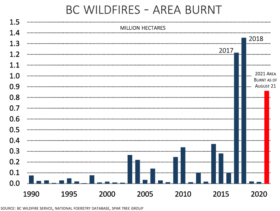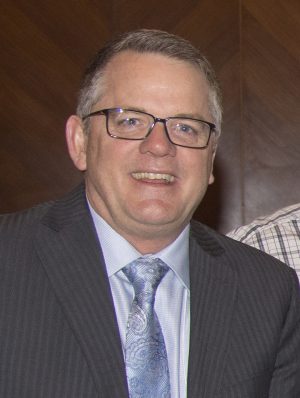 Kansas City Southern will begin talks with CN Rail, as the slugfest between Canadian archrivals (CN and CP) gets ugly. In other Business news: new home sales jump again in the US, Gorman’s Nick Arkle on why lumber is so expensive; Brock Mulligan on the related boon for Alberta’s forest industry; the Wall Street Journal on why this market ride is more robust than past booms; and Cees de Jager on the Softwood Lumber Board 2020 ROI. Companies in the news include: Paper Excellence, Kandola Forest Products, and Biewer Lumber.
Kansas City Southern will begin talks with CN Rail, as the slugfest between Canadian archrivals (CN and CP) gets ugly. In other Business news: new home sales jump again in the US, Gorman’s Nick Arkle on why lumber is so expensive; Brock Mulligan on the related boon for Alberta’s forest industry; the Wall Street Journal on why this market ride is more robust than past booms; and Cees de Jager on the Softwood Lumber Board 2020 ROI. Companies in the news include: Paper Excellence, Kandola Forest Products, and Biewer Lumber.
In Forestry/Climate news: Joe Biden’s Climate Summit fails to satisfy the critics, particularly on the biomass and media coverage front; and in mass timber news, BC to study economics of its use in affordable housing; and Wisconsin considers early adoption of codes permitting its use.
Finally, is a coveted guitar wood on the stairway to heaven?
Kelly McCloskey, Tree Frog Editor




 With the wild price run that has been in effect since about June of 2020, it is starting to become more obvious that the North American wood products supply chain is completely strained. …While a temporary shortage of lumber, OSB and plywood has occurred, it is more a function of short-term constraints [which] have impacted the supply side during this strong demand cycle, so hence the runaway commodity wood products prices. The simple math is this… If demand grows by more than about 2.5 billion bf this year and in 2022, then there will be a potential gap and that will create more ongoing price volatility. The only region in North America that has added any significant new lumber capacity in North America is the US South.
With the wild price run that has been in effect since about June of 2020, it is starting to become more obvious that the North American wood products supply chain is completely strained. …While a temporary shortage of lumber, OSB and plywood has occurred, it is more a function of short-term constraints [which] have impacted the supply side during this strong demand cycle, so hence the runaway commodity wood products prices. The simple math is this… If demand grows by more than about 2.5 billion bf this year and in 2022, then there will be a potential gap and that will create more ongoing price volatility. The only region in North America that has added any significant new lumber capacity in North America is the US South. 

 In the second week of September something happened which has not occurred for a very long time with any Canadian provincial government – the Saskatchewan government announced new timber allocations. …All four companies receiving these timber allocations have capacity investments of almost $1 billion. …Saskatchewan’s announcements make me want to call this province the “US South of Canada” because I cannot recall in the last decade when else such a large active expansion of the Canadian industry has taken place.
In the second week of September something happened which has not occurred for a very long time with any Canadian provincial government – the Saskatchewan government announced new timber allocations. …All four companies receiving these timber allocations have capacity investments of almost $1 billion. …Saskatchewan’s announcements make me want to call this province the “US South of Canada” because I cannot recall in the last decade when else such a large active expansion of the Canadian industry has taken place.
 BC, Alberta and New Brunswick, have different methodologies of setting stumpage rates for provincial sawlogs that can disproportionately impact sawmill operators.
BC, Alberta and New Brunswick, have different methodologies of setting stumpage rates for provincial sawlogs that can disproportionately impact sawmill operators. The last few years of wildfires in BC… are a concern for all.
The last few years of wildfires in BC… are a concern for all.
 Balanced solutions to B.C.’s old-growth forests protection that best serves all British Columbians is possible — but it seems out of reach. For example, the provincial government’s recently announced Old Growth Technical Advisory Panel that will dictate government’s decision-making on logging deferrals is very troubling. Not because of its intent, but for the blatant unbalanced representation of its members. This committee — absent of any forest-sector professionals, forestry-dependent communities or First Nations leadership — will recommend and lobby for new areas needed to be protected without any understanding of the consequences of their opinions. …But dig a bit deeper and you’ll find the composition of its members dominated by Sierra Club affiliates and other individuals … vocally against any continued old-growth harvesting.
Balanced solutions to B.C.’s old-growth forests protection that best serves all British Columbians is possible — but it seems out of reach. For example, the provincial government’s recently announced Old Growth Technical Advisory Panel that will dictate government’s decision-making on logging deferrals is very troubling. Not because of its intent, but for the blatant unbalanced representation of its members. This committee — absent of any forest-sector professionals, forestry-dependent communities or First Nations leadership — will recommend and lobby for new areas needed to be protected without any understanding of the consequences of their opinions. …But dig a bit deeper and you’ll find the composition of its members dominated by Sierra Club affiliates and other individuals … vocally against any continued old-growth harvesting.

 It’s a new decade, and we are now pondering government’s just-released initiative, “Modernizing Forest Policy in BC; Setting the Intention and Leading the Forest Sector Transition”. …First impressions? Obviously, the reference to completing the Contractor Sustainability Review process… was necessary and very welcomed. …More broadly, there are many elements we can agree on, be it through increased allocations to Indigenous peoples, increased volumes to communities, altering the BC Timber Sales program, or promotion of volumes directed to value-added manufacturers. …I’m doubtful about how exactly the intention of improving BC’s investment climate and our overall competitiveness will be achieved… taking away tenure from the majors (and potentially contractors) with an undefined compensation package.
It’s a new decade, and we are now pondering government’s just-released initiative, “Modernizing Forest Policy in BC; Setting the Intention and Leading the Forest Sector Transition”. …First impressions? Obviously, the reference to completing the Contractor Sustainability Review process… was necessary and very welcomed. …More broadly, there are many elements we can agree on, be it through increased allocations to Indigenous peoples, increased volumes to communities, altering the BC Timber Sales program, or promotion of volumes directed to value-added manufacturers. …I’m doubtful about how exactly the intention of improving BC’s investment climate and our overall competitiveness will be achieved… taking away tenure from the majors (and potentially contractors) with an undefined compensation package.